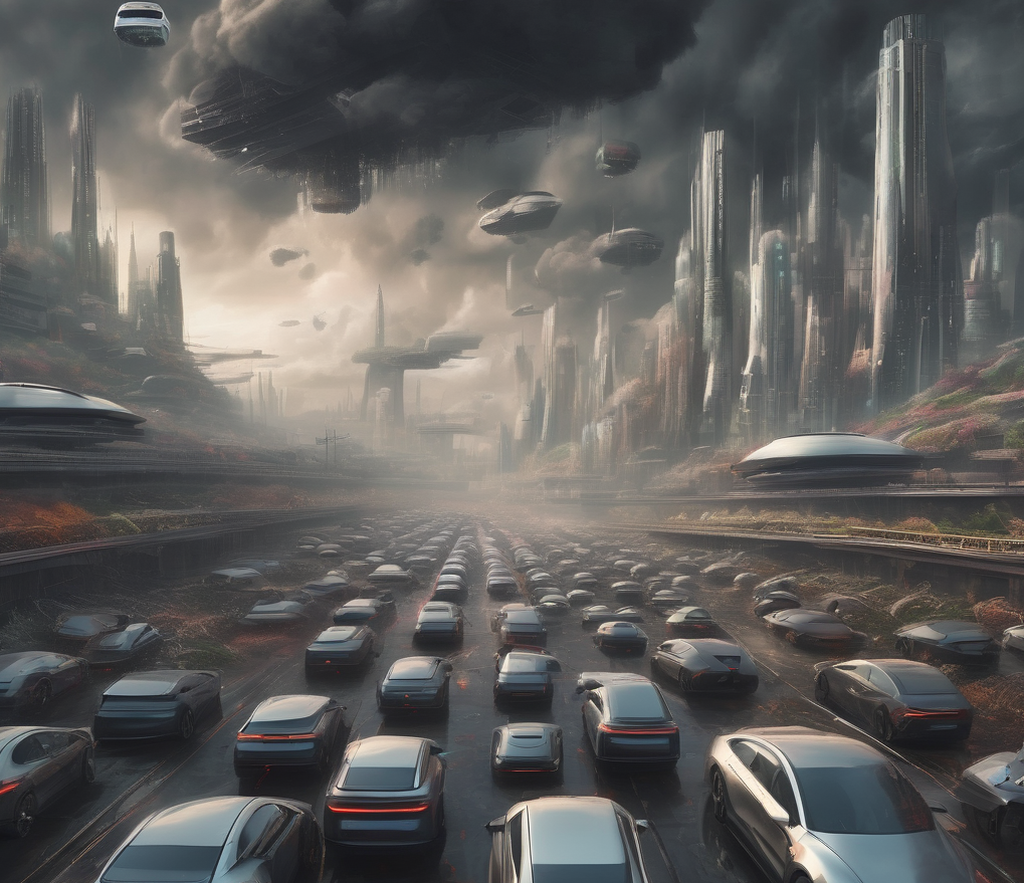Cities Are Technology
Table of Contents
When most people contemplate technology, their minds immediately conjure sci-fi spectacles: humanoid robots, sentient AI, and interplanetary travel. But technology extends far beyond these futuristic tropes. At its essence, technology represents our methodical manipulation of the environment to serve human needs. Through this fundamental lens, cities themselves emerge as perhaps humanity’s most sophisticated and consequential technological achievement.

Technology, properly defined, involves applying scientific knowledge to solve practical problems. Cities embody this process on a grand scale—they represent the culmination of millennia of continuous problem-solving. From the first permanent settlements along fertile river valleys to the sprawling metropolises of today, urban environments have evolved as complex systems addressing fundamental human needs: shelter, security, resource distribution, waste management, transportation, and social connection.
I’m an unabashed urban enthusiast. Cities remain criminally underappreciated as humanity’s most remarkable technological innovation. While we readily celebrate individual inventions—smartphones, vaccines, or electric vehicles—we rarely acknowledge the city itself as a comprehensive technological system. Ancient Rome’s aqueducts, sewers, and multi-story apartment buildings represented engineering marvels that enabled unprecedented population density. Medieval city walls and defensive architecture solved security problems. The grid systems of planned cities from Teotihuacan to Manhattan created navigable order from potential chaos.
The Car-Shaped Problem #
If you’ve followed my writing, you’ve likely realized this represents yet another entry in my ongoing critique of automobile dependency. A paradigm shift in urban design philosophy is finally gaining momentum, particularly among younger generations who’ve recognized the profound limitations of car-centric development patterns and suburban sprawl.
Evidence increasingly demonstrates that automobiles represent a suboptimal solution for urban mobility. Cars deliver extraordinarily inefficient transportation—a typical vehicle weighing 4,000 pounds to move a single 150-pound human being represents an almost comically wasteful energy proposition. They’re demonstrably dangerous, killing approximately 1.35 million people globally each year. And their environmental impact threatens the very biosphere that sustains our existence.
The automobile-centric development that dominated 20th-century urban planning represents a historical anomaly rather than an inevitable evolution. Cities thrived for thousands of years before cars, designed at human scale for walking. The medieval European cities that tourists flock to photograph weren’t designed for pedestrians out of some romanticized notion—they were built that way because it worked. The post-WWII suburban experiment, fueled by cheap oil and government subsidies, created unprecedented dependencies on private vehicle ownership while dissolving the urban fabric that supported community and efficient resource use.
Reimagining Urban Technology #
I acknowledge my climate pessimism—at this juncture, humanity likely faces unavoidable geoengineering interventions, having crossed several critical thresholds. The atmospheric carbon clock continues ticking while emissions metrics trend in alarming directions. Long-term species survival may necessitate stratospheric aerosol injection or massive carbon capture deployment, but those represent topics for another discussion.
Nevertheless, substantial hope remains for dramatically improving quality of life through urban redesign. Rather than subsidizing failing automobile manufacturers or expanding highway systems that induce further demand, we could redirect resources toward rehabilitating our cities as genuinely human environments. We can transform urban centers into places where people genuinely want to live, work, and engage—places that foster human flourishing without the constant intrusion of noisy, dangerous, space-consuming vehicles.
The transformation requires reimagining public space allocation. Consider that in most American cities, 50-70% of urban land is dedicated to cars through roads and parking—an astonishing commitment to a single transportation mode. We could reclaim substantial portions of this space for tree canopies that reduce urban heat islands, public plazas that foster community interaction, dedicated cycling infrastructure that enables safe active transportation, and efficient public transit systems that move people more effectively than private vehicles ever could.
Cities that have already implemented such transformations demonstrate their viability. Copenhagen’s bicycle superhighways, Barcelona’s superblock model, and Paris’s recent rapid transformation under Mayor Anne Hidalgo illustrate how quickly urban environments can evolve when political will aligns with sound urban design principles. These cities aren’t sacrificing economic vitality or mobility—they’re enhancing both while simultaneously improving environmental outcomes and quality of life.
I harbor no illusions about the challenges. Entrenched financial interests, cultural attachments to automobility, and institutional inertia create formidable obstacles. The transition won’t materialize overnight, nor will it proceed without resistance. But cities have continuously reinvented themselves throughout human history, adapting to changing needs, technologies, and values.
As our most sophisticated and consequential technological achievement, cities remain our best hope for addressing climate change, resource constraints, and quality of life concerns simultaneously. The most sustainable, efficient, and potentially delightful human habitats have always been thoughtfully designed cities. By recognizing urban environments as technology—systems we can deliberately modify and improve—we unlock possibilities for reimagining our collective future.
One can, indeed, dream. But more importantly, one can advocate, organize, and participate in the evolution of these remarkable human inventions we call cities.